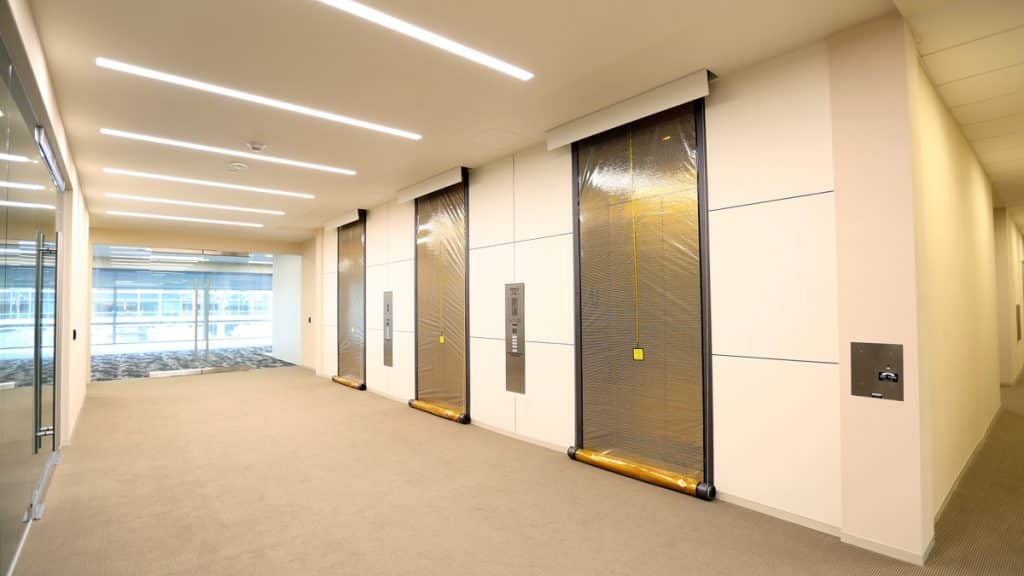A Lifesaving Innovation Hidden in Plain Sight
Imagine walking through the polished, marble-floored lobby of the Helios Tower, a towering skyscraper in a bustling metropolis. Amidst the grandeur and sophistication, there’s an unassuming yet crucial safety feature: the elevator smoke curtains. These curtains are not just fabric; they are barriers between life and safety during emergencies, heroes hidden in the architectural ensemble of the building.
The Vital Role of Elevator Smoke Curtains
Elevator shafts can act like a chimney in a fire, allowing smoke to travel rapidly through a building. This is where elevator smoke curtains come into play. They are specially designed to seal off the elevator shaft in the event of a fire, preventing the spread of smoke and flames.
According to the National Fire Protection Association (NFPA), elevators are involved in an estimated 5,000 to 10,000 fires in commercial and residential structures annually in the United States. The use of smoke curtains can be pivotal in reducing the risk of fire spread and smoke inhalation injuries, which account for the majority of fire-related fatalities.
Types and Innovations in Smoke Curtain Technology
There are several types of elevator smoke curtains, each suited to different building requirements:
Automatic Smoke Curtains: These deploy automatically when a fire is detected and are integrated with the building’s fire alarm system.
Permanent Smoke Barriers: These are stationary and provide constant protection, often used in conjunction with automatic systems for added safety.
Magnetic Gasketing Systems: A newer innovation, these create a tight seal using magnetic force and are less intrusive than traditional barriers.
A study by the Fire Protection Research Foundation emphasized the effectiveness of smoke barriers, noting that they can significantly limit the movement of smoke, which is crucial for evacuation and rescue operations.
The Impact on Building Safety and Regulations
Some and fire curtains are more than a safety feature; they are a compliance necessity. The International Building Code (IBC) and NFPA have specific requirements for smoke barriers in buildings. The compliance with these codes not only ensures safety but also impacts the insurance and liability aspects of building management.
Interestingly, a report by the American Society of Mechanical Engineers (ASME) highlighted that buildings equipped with advanced fire safety systems, including smoke curtains, saw a 19% decrease in fire-related incidents, underscoring the importance of these systems.
The Future: Smart Integration and Enhanced Materials
Looking ahead, the integration of smart technologies with smoke curtain systems is on the rise. Sensors that detect not just smoke, but changes in air quality and temperature, are being developed to deploy curtains more efficiently.
Material innovation is also a key area of focus. Researchers are exploring materials that can withstand higher temperatures and provide longer protection during fires, enhancing the overall efficacy of smoke curtains.
Conclusion: A Crucial Layer of Protection
In buildings like the Helios Tower, elevator smoke curtains remain out of sight but are always ready to spring into action, offering a crucial layer of protection. They embody the intricate balance of design, safety, and technology, playing a silent yet vital role in safeguarding lives against the ever-present threat of fire. As technology advances, these systems will continue to evolve, offering even greater levels of security and peace of mind in urban landscapes.

